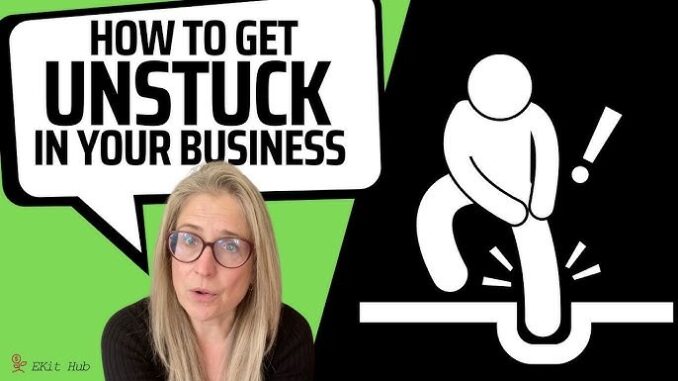
Every business hits a plateau at some point. The energy that once fueled growth starts to fade, progress slows, and the excitement of building something new gives way to a sense of stagnation. It’s a frustrating and often confusing phase, especially when you’ve been working hard and doing everything “right.” But feeling flat doesn’t mean failure—it’s a signal that something needs to shift. Getting unstuck requires a mix of reflection, experimentation, and renewed focus. It’s not about dramatic reinvention overnight; it’s about finding fresh momentum in places you might have overlooked.
One of the first steps in breaking out of a flat phase is to step back and reassess. When you’re deep in the day-to-day, it’s easy to lose sight of the bigger picture. Taking time to reflect on your original vision, your current goals, and what’s changed in the market can reveal misalignments or missed opportunities. Maybe the business has drifted from its core purpose, or maybe the needs of your customers have evolved. A founder who started out solving a specific problem might find that the problem has shifted—or that the solution needs to be reimagined. This kind of strategic pause isn’t indulgent; it’s essential for realignment.
Sometimes, the feeling of being stuck stems from doing too much of the same. Routines and systems are important, but they can also become rigid. Injecting creativity into your business can reignite energy and open new paths. This doesn’t mean abandoning what works—it means exploring adjacent possibilities. A business that’s been relying on one marketing channel might experiment with a new format or platform. A team that’s been focused on execution might benefit from a brainstorming session that invites wild ideas. These moments of exploration can lead to insights that shift the trajectory, even if the changes are incremental.
Reconnecting with customers is another powerful way to get unstuck. When business feels flat, it’s often because the connection between the company and its audience has weakened. Engaging directly with customers—through conversations, surveys, or informal check-ins—can provide clarity and inspiration. You might discover unmet needs, hear stories that remind you why you started, or uncover feedback that points to simple improvements. A business owner who takes time to talk with long-time clients may find that small tweaks in service delivery could make a big difference. These interactions are not just informative—they’re energizing.
Internal dynamics also play a role in how a business feels. If the team is disengaged, unclear on priorities, or stuck in repetitive tasks, that energy—or lack of it—will ripple outward. Leaders need to tune into the emotional pulse of the organization. Are people excited about what they’re working on? Do they feel heard and empowered? A flat business often reflects a flat culture. Revitalizing that culture might involve revisiting goals, celebrating wins, or creating space for new ideas. A manager who encourages team members to take ownership of projects or propose innovations can unlock motivation that’s been dormant.
Sometimes, getting unstuck means narrowing your focus. When growth slows, the instinct is often to expand—add new products, enter new markets, try new tactics. But more isn’t always better. Focusing on what you do best and doubling down on your strengths can create clarity and momentum. A company that’s spread thin across multiple offerings might find renewed energy by refining its core product and improving the customer experience. That focus allows for deeper impact and often leads to organic growth. It’s not about doing less—it’s about doing what matters most.
External input can also be a catalyst for change. Talking to mentors, peers, or advisors can offer fresh perspectives and challenge assumptions. When you’re stuck, it’s easy to become insulated in your own thinking. Someone outside your immediate circle might see opportunities or obstacles that you’ve overlooked. A founder who’s been struggling with sales might benefit from a conversation with someone who’s navigated similar challenges. These exchanges don’t have to be formal—they just need to be honest. The goal is to spark new thinking and open doors that feel closed.
Momentum often returns when you take action, even if the action is imperfect. Waiting for the perfect plan or the right moment can prolong stagnation. Instead, choose a direction and move. Test a new idea, reach out to a new partner, launch a small campaign. These steps don’t have to be big—they just need to be intentional. A business that’s been quiet on social media might start sharing behind-the-scenes content to reengage its audience. That small shift can lead to conversations, feedback, and renewed visibility. Action creates movement, and movement creates momentum.
Ultimately, getting unstuck is about reconnecting—with your purpose, your customers, your team, and your own sense of possibility. It’s about recognizing that flat periods are part of the journey, not the end of it. They’re invitations to pause, reflect, and reimagine. When you approach them with curiosity and courage, you often find that the next chapter is closer than you think. And once you start moving again, even slowly, the energy returns. The business begins to feel alive again—not because everything has changed, but because you’ve chosen to engage with it in a new way.


Leave a Reply